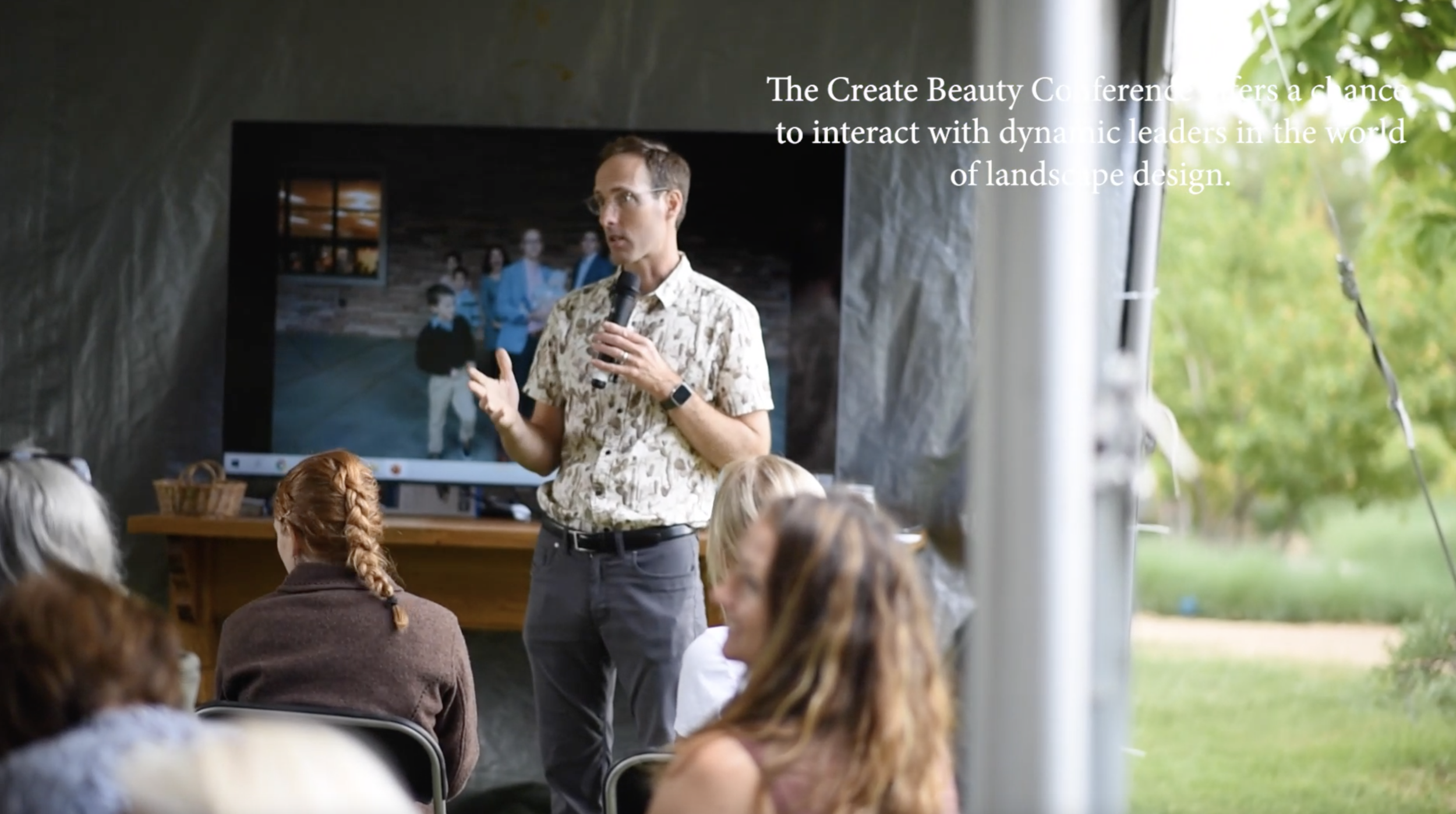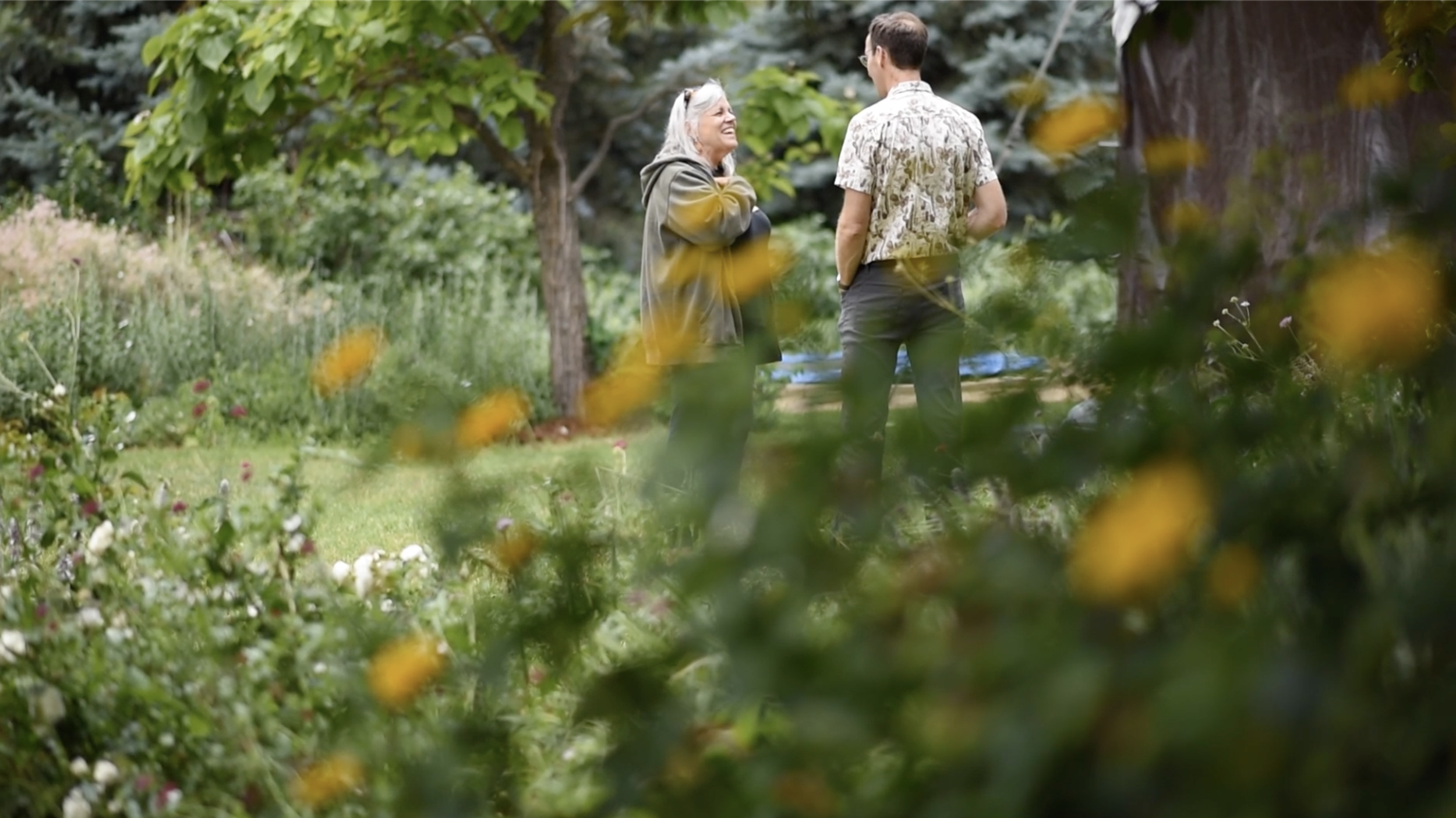By Emily Maeda
August 3, 2021
The third annual Create Beauty conference took place on Saturday, July 26th with Thomas Ranier as the main speaker. While the conference is normally held inside at the beginning of spring, this year the conference was held under a tent in a garden. Covid cancelled the 2020 conference and rather than wait two years, we decided everyone could use inspiration and went forward with the summer conference.
We are so glad we did! Thomas Rainer brought a wealth of experience and insight to planting design. He is a working landscape architect who not only designs but also deals with long-term maintenance and the realities of working with multiple demands from clients. He built off ideas in his book, Planting in a Post-Wild World, but expanded and broadened his thoughts. His talk began by asking the attendees to consider the archetypal landscapes that surround them. One of his big ideas is that landscapes must be ‘legible’ to the average person. Sustainable plantings can often be read as ‘too wild’ or ‘too messy’ and he urged everyone to think about the archetypal setting they were creating. Is the design for a forest? A shrubland? A meadow? Each overarching metaphor helps the designer to choose appropriate plants that communicate the feelings of the archetype. In thinking through larger settings right at the beginning, the designer can work towards a legible landscape that is both pleasing to the viewer and sustainable in practice.
Thomas Rainer answers questions after one of his talks. Photo by Brooke Forwood.
He discussed plant communities as well, a topic near to our hearts at Tree of Life Landscapes. He discussed plant morphology and designing with succession in mind. How do the plants fill in during the season? Which are early bloomers that fade? What groundcovers are filling in to keep out the weeds? He showed slides of plant communities that demonstrated the above ground and below ground relationship between plants; plants that are taller generally have deeper roots, while shorter plants have shorter roots. They coexist and share beneficial bacteria underground. Our ideas of giving plants space does not make them happier. They like to be close to their neighbors!
Another brilliant design observation he shared with the attendees was when starting a design, think in black and white. The black is plants and the white is hardscapes being carved out of the plants. This immediately sets the default toward full plantings and the hardscapes’ interaction within those spaces rather than plants as the afterthought. We couldn’t agree more and approach our designs in the same ways. Plants want to live together and flourish best when in community.
The conference provides face-to-face interactions and learning. Photo by Brooke Forwood.
Kevin Williams, horticulturist at the Denver Botanic Gardens, gave a presentation on his Josephine Street matrix planting. Kevin’s work at the DBG has inspired us and we were excited to see how the project has flourished and grown from an experimental start three years ago. Kevin has a vast knowledge of suitable plants for Colorado’s climate and his work with seeding is on the cutting edge of where we hope landscape design is moving.
Participants loved the experience of learning within a garden full of plants. It felt wonderful to gather and talk after a year and a half in isolation. While it is hard to make a summer conference happen because the busy season is in full swing, we were grateful to think about plants with others. Please stay tuned for information about our 2022 conference. We have big plans!




